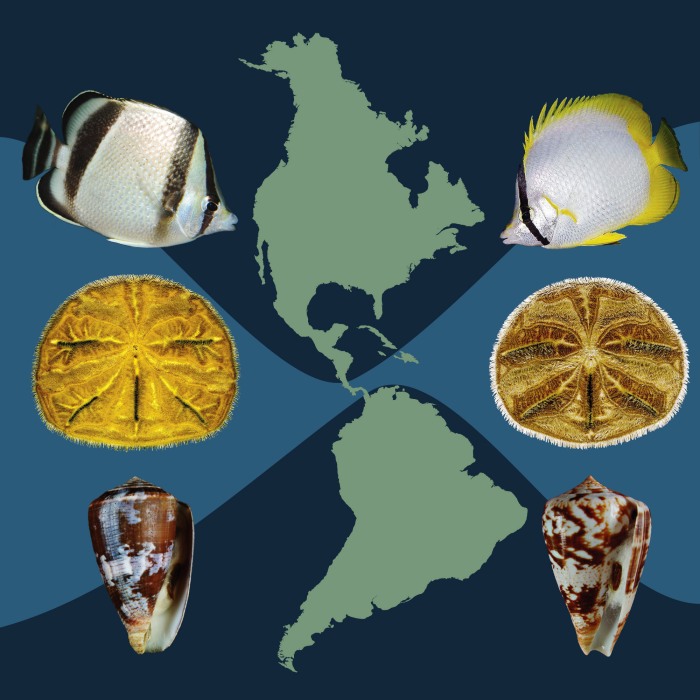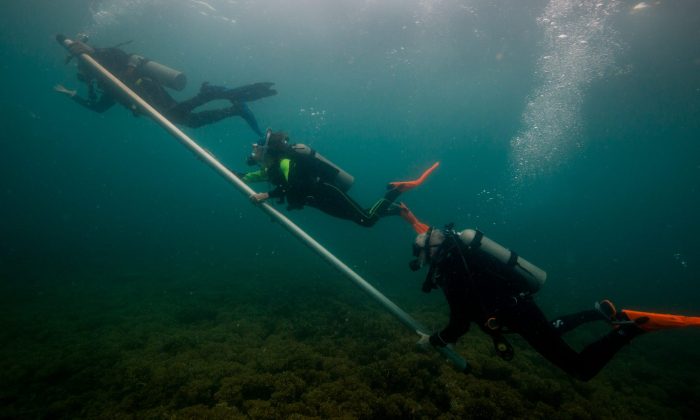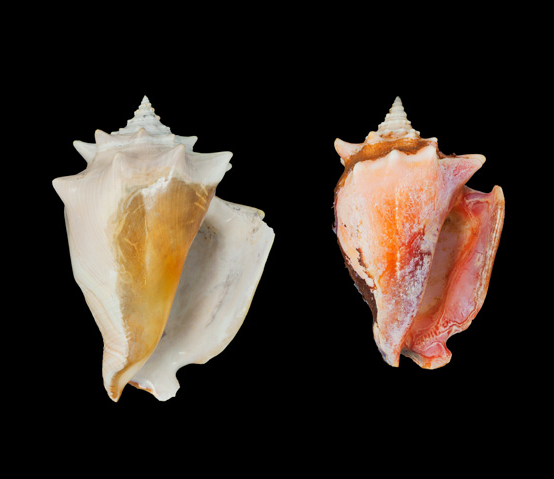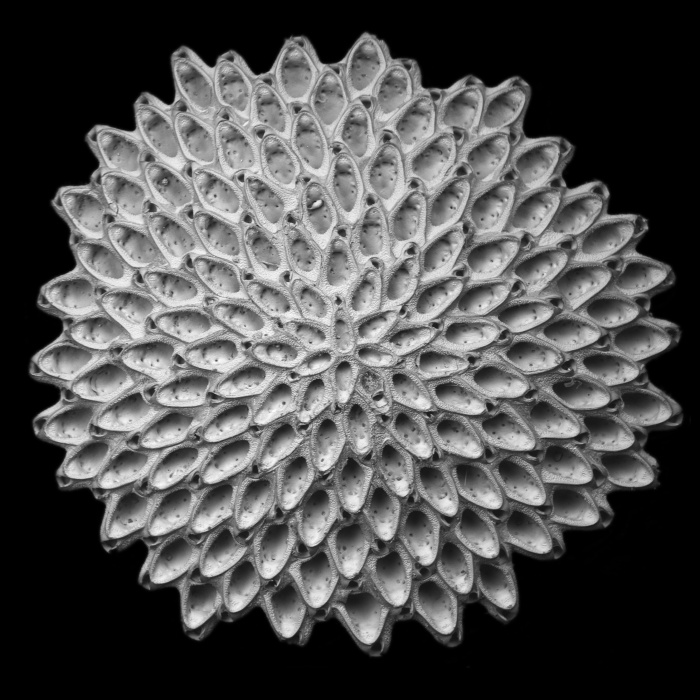Research in our lab aims to better understand how life on earth changes over time. We are especially interested in using past records to reconstruct natural and human-driven changes in ecosystems and reveal the ecological and evolutionary processes behind those changes.
We study different kinds of life — from single-celled animals to megafauna — and across a wide variety of habitats. A lot of our work focusses on highly biodiverse marine ecosystems in the tropics, including coral reefs. But we also dabble in terrestrial ecosystems.
Our home is the Smithsonian Tropical Research Institute in Panama and we are supported by the Panama government (SENACYT), The US National Science Foundation, the National System of Investigators, the Smithsonian Institution and donations.
Follow us on Twitter
PROJECTS

Historical changes on coral reefs
Understanding the long-term dynamics of coral reef ecosystems helps place modern changes into historical context and reveal ecological processes. We build long-term records of ecosystem change on reefs by coring or bulk sampling fossil and modern coral reefs and extracting the skeletal remains of fishes, sponge spicules, algae, molluscs, urchins (and anything else that leaves a fossil record) and identify them using in-house reference collections. We use high resolution U-Th to date our samples, and stable isotope analyses to extract ecological and environmental information. These millennial-scale records provide pre-human baselines and reveal the timing of ecosystem changes. By disentangling the roles of natural and anthropogenic causes of shifts in reef states we hope to provide conservation targets and recommendations.

Fossil shark dandruff
Erin Dillon, PhD Candidate at UC Santa Barbara and STRI fellow is leading studies into reconstructing ancient shark communities using fossilised shark dermal denticles (skin teeth). Read more about her work here and grab Erin’s papers.

Formation of the Isthmus of Panamá
The formation of the Isthmus of Panama stands as one of the greatest natural events of the Cenozoic. It joined the two American continents and split an ocean in two, offering a unique natural experiment in ecology and evolution. Reconstructing how and when the Isthmus of Panama formed is therefore critical for understanding the evolution and biogeograhical history of life across the Americas. In this suite of papers we argue that formation of the land bridge took many millions of years, slowly constricting the seaways until the final land bridge was complete around 2.8 million years ago.

Paleoenvironmental changes
Reconstructing past environments provides essential context to any measures of ecological and evolutionary study. We use a variety of approaches including sediment analyses, stable isotopes and fossil morphometrics.
Recently, we have been trying to understand the causal mechanism(s) of the region-wide Plio-Pleistocene extinction in the Caribbean. Previous work found that extinctions lagged 1-2 Myr behind the apparent cause. Ethan Grossman led this study to reconstruct coastal Caribbean conditions using stable isotope profiling of gastropods. We found during the apparent extinction “lag”, large quantities of seasonal rainfall were affecting coastal communities. The timing of cessation of freshwater input coincides better with the extinctions suggesting a causal link, but more work relating the biotic and environmental data is required.
(Image: Takuro Kobashi).

Ancient DNA
We have recovered ancient DNA from coral reef cores extending several thousand years in Caribbean and Pacific Panama. Much of the material We are looking to explore the validity of this material for reconstructing communities that leave no fossil record and interpret changes in biodiverisity. The project is in collaboration with Matt Leray at STRI.

Human-driveN evolution in Wild populations
Does the long-term harvesting of the largest individuals in a population apply selection to evolve to reproduce at smaller size?
Both Caribbean conch (Strombus pugilis) and Pacific Cynoscion (sciaenid fishes) show evidence of reducing size at maturity following millennia of harvesting.
Alexis Sullivan is exploring the genetic basis of this decline in size in fossil, archeological and modern conch.
POST-GLACIAL SEA-LEVEL RISE ON THE ISTHMUS OF PANAMA
Max Titcomb produced new bathymetric and topographic models of the isthmus of panama to reconstruct ancient coastlines as sea level rose over the last 26,000 years.
Follow the link below to learn more about the project and watch videos of the changing land and seascapes on the isthmus and select regions including Bocas del Toro and Coiba archipelagos.

Ancient whale migrations
PhD candidate Larry Taylor and Seth Finnegan at UC Berkeley led this study into the use of oxygen isotopes in whale barnacles to track whale migrations.
Larry used fossil whale barnacles from Panama and other locations to show that Pacific humpback whales in the Pleistocene were undertaking migrations remarkably similar to those of modern whales.

Ecological History of the Panama canal
When the Panama Canal was built 100 years ago it formed Gatun Lake – at the time the largest man-made lake in the world. Little is known about how freshwater communities in the lake evolved in response to construction of the canal, flooding of the lake, subsequent natural climatic fluctuations, introduced species and eventually canal expansions.
Jorge Salgado is leading this project to unite sediment core records with environmental data to reveal key events in the history of the canal and apply these to recommendations for future management of the canal.

Old dogs, new tricks?
Do the niche breadths of species vary throughout the life of a species or they a fixed ‘trait’? After the Isthmus of Panama formed, Caribbean cupuladriid bryozoans were able to expand their niche breadths considerably to take advantage of a new type of habitat that became available. But we observe that not all species did so at the same speed. Young species (those that evolved recently) were able to rapidly expand into the new habitats, but older species took a further two million years. Seems that old dogs can learn new tricks – but it takes time.
Cupuladriid bryozoans are free-living (walking!) colonial animals with a great fossil record in Tropical America. We use this record to also explore drivers of biological origination and extinction, and the roles different life histories have in the evolutionary outcomes of species.
Science communication

Martina and the bridge of time
Martina is utterly bored by school…
That is until she notices that her history book only starts with the arrival of Christopher Columbus in 1502. There must have been someone, something in Panama before then!
Frustrated by a lack of answers, Martina cobbles together a time machine to find out for herself. As she hurtles back through time, she begins to uncover the fascinating true history of the Isthmus of Panama – one of deep oceans, perilous volcanoes, long-extinct animals and complex human societies.
But time travel is trickier than she thought! When the time machine’s source of energy unexpectedly shatters, Martina gets trapped in the past. As she struggles to return home, Martina learns some unexpected truths about her own history – and herself
Join Martina in this coming-of-age time-travel quest with Panamanian artist Ian Cooke-Tapía and Smithsonian scientist Aaron O’Dea.

A history of life in 100 fossils
With Paul Taylor we showcase 100 key fossils that together illustrate the evolution of life on earth. We selected iconic specimens from collections at the Natural History Museum, London and Smithsonian Institution. Fossils were chosen not only for their importance in the history of life, but also because of the visual stories they tell.
So far, the book has been published in six languages (English, German, Japanese, Chinese, French and Italian) and is available all over.
HNIP

Historia Natural del Istmo de Panama
Este libro, editado con Félix Rodríguez, reúne a investigadores de una amplia gama de disciplinas para presentar, en nueve capítulos, información sobre los ecosistemas, los cambios climáticos y la evolución de las faunas y floras marinas y terrestres en el istmo de Panamá.
El libro fue apoyado por SENACYT.
Isthminia panamensis
Resources
New lab members
Data
Github
Neogene datasheet
Holocene datasheet
ID guides and reference collections
Coral ID
Mollusc ID
Otolitos in Ngäbere
In house reference collections: Denticles, Pacific and Caribbean Scleractinia, Caribbean sponge spicules, Tropical American bryozoans, gastropods, bivalves and coastal fish otoliths and teeth.
Opportunities
Internships
The lab has a limited number of opportunities for internships. If you interested in gaining research experience and are passionate about biology or paleontology and enjoy working hard as part of a team consider applying to the Smithsonian Tropical Research Institute’s Internship Program.
We are especially interested in receiving applications from people that are often underrepresented in research. Please note that there are special opportunities for Panamanians with the SENACYT-STRI Internship Program.
If you have your own funding, or ideas for other funding sources, please contact the lab with your CV and a cover letter to see if there are opportunities available.
Fellowships
If you would like to develop your own research project there are several opportunities you can pursue for funding.
Short term Fellowships
The Short Term Fellowship program at STRI supports student researchers to conduct a three month research project at STRI. The application has to be written by the student in collaboration with one main advisor and one or two co-advisors (see the list of STRI Staff Scientists).
The STF program is geared towards students enrolled in a PhD program, but if you are masters or just out of PhD then you may be eligible.
Predoctoral fellowships
For students enrolled in a PhD program to develop a significant portion of their research program at STRI. See more here.
POSTDOCTORAL FELLOWSHIPS
We are always looking for postdoctoral researchers interested in conducting innovative and world-class research in the lab that aligns with our broad interests.
The Smithsonian and the Smithsonian Tropical Research Institute offers a variety of different fellowship opportunities for postdocs, including 1-2 year postdocs, the Tupper fellowship, Stable Isotope fellowships, molecular fellowships, Senior fellowships and a special fellowship for Latin American Researchers. If you are interested in collaborating through a postdoctoral fellowship, please contact the lab to discuss opportunities.
CONTACT
The O’Dea Lab is located in the Surfside building in the Naos Island Marine Laboratories at the end of the Causeway, Amador, Panama City, República de Panamá (8.915250, -79.530944)
We also have a small lab at STRI’s Gamboa Research building (9.119962, -79.704435), and a deposit in the Tupper building of STRI (8.963933, -79.543813) and we work at STRI’s Bocas del Toro and Coibita Research stations.
Email: odeaa@si.edu
Telephone: +507 212 8817
Follow the lab on Twitter
You must be logged in to post a comment.